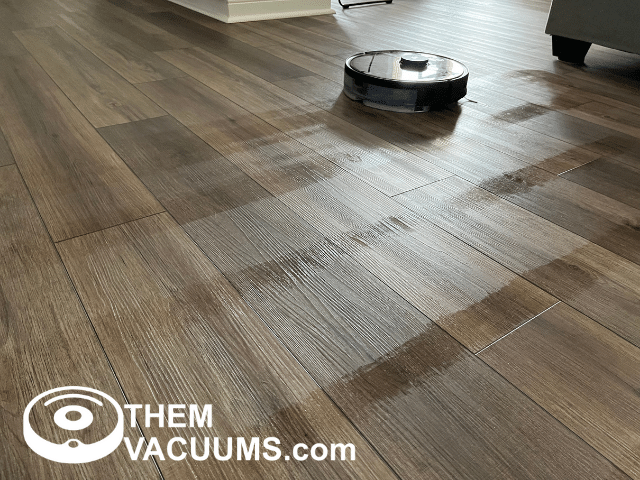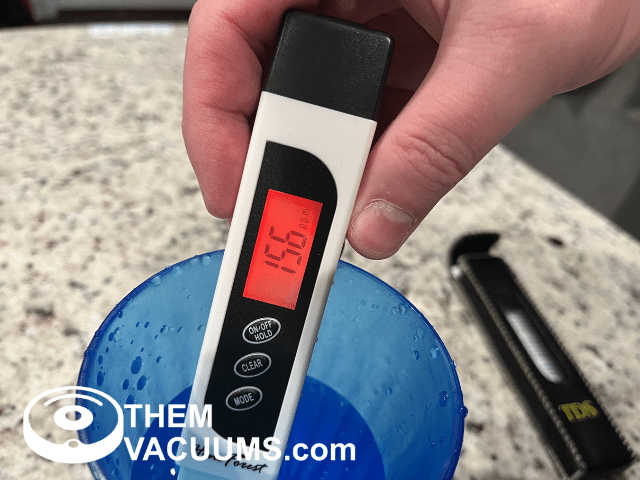When it comes to floor cleaning, the choices are endless! You’ve got the classic mop and bucket, or you can step into the future with a sleek robot mop.
Robot mops are all the rage these days, thanks to their sheer convenience. But the burning questions remain: What floor cleaners can you use with these space-age gadgets, or can you even use them at all?
Fear not, we’ve got you covered! In this article, we’ll unravel the mysteries of robot mop cleaning. We’ll spill the beans on which cleaners are A-OK and share some pro tips on how to make your floors gleam with the help of your trusty robot sidekick. Get ready to transform your cleaning game!
What Is A Chemical Floor Cleaner?
When you want to clean your floors, you’ll visit many stores that sell all types of cleaners. One type of cleaner is made to clean floors like tile and hardwood.
These floor cleaners are often strong cleaners and some may even contain a wax to protect the floors. These types of cleaners work great if you’re only using a mop and bucket, but they can be a problem for robot mop that we’ll cover next.
Please Avoid Regular Floor Cleaners!
You cannot put a cleaning solution into your robot mop’s tank. This is because the chemicals in the cleaner can damage/corrode the small parts inside the robot.
You can get a spray bottle and lightly put down some heavily diluted floor cleaner on trouble spots, but it’s best you don’t over do it and avoid puddling. You don’t need much cleaner with robot mops as it’s the water and meticulously cleaning from the robot that does the cleaning, I’ll explain the water part in a bit.
This works because many robot mops don’t suck up the dirty water and the few that do are used to sucking up dirt and grime, so they’re made for it.
If you want a natural cleaner, fill a spray bottle with 3/4 clean water and then add vinegar. The vinegar will give you a streak free clean and works as a homemade disinfectant.
Some robot mops have a cleaning solution made just for them like the iRobot Braava Mop (Amazon Link Ad) and that is the only thing besides water you should use.
Water Is The Best Floor Cleaner To Use In A Robot Mop
When people get their new robot mop, many of them are quite shocked that the manufacturer only recommends using clean water and no other cleaning solution.
There are two reasons for this:
- Your robot mop is not a replacement for regular mopping, only a helper and a duster.
- Soap makes water, wetter.
It’s point two that I want to go over.
When you combine soap and water, the only thing you’re doing is making the water more “watery”. It’s the water that does the actual cleaning we see, the soap just allows more surface area and break surface bonds, so things get cleaned better.
This is why robot mops want you to use CLEAN water, this means the cleaner the water the better. If you have distilled water, use that, as it’s free of contaminants and will absorb more dirt and clean better than tap water.
Distilled Water Works Even Better At Cleaning Floors
The best kind of cleaner for most robot mops is distilled water.
Distilled water is the purest water, it doesn’t have any salts or other contaminants in it. The fewer items in the water, the more it can absorb and clean. This is why many robot mop manufacturer suggest using it.
You can get distilled water from any grocery store in the water isle.
Bottled Water Will Work Too
If you can’t get distilled water, then bottle water works just as fine, especially since the water tanks on most robot mops are not that big. My RoboRock S5 robot vacuum and mop barely even holds half of one water bottle.
To give you an idea, using a TDS meter (Total Dissolved Solids) I measure a regular bottle of water from Walmart and get 15ppm, if it were distilled water I would get 0ppm, and my tap water is 156ppm. So you can see how bottle water is better than tap water, the lower the number the better cleaning the robot mop can do.
It’s not uncommon for households to have 200-500ppm of solids in the water, and any more than 500 is not ideal. The bottle water having such a low number is great and will work better at cleaning your floors then tap water! Not only that, but the more stuff in the water, the more it’s leaving behind on your floors when it’s cleaning, so you want as clean of water as possible.
If you’re wanting to test your own water, you can get TDS meters here. (Amazon Link Ad)
Just Avoid Vinegar As It’s Horrible!
You should not put vinegar directly in your robot mops water tank as it will corrode and damage inner parts.
You can use a very diluted solution of water and vinegar in a spray bottle and lightly spray areas of the floor that need the most attention.
You should avoid over spraying and puddling as that will cause problems and damage the floors. You should also avoid spraying the whole floor, only light mist the trouble areas.
And when it comes to vinegar or any new cleaner, always test a small area to make sure it doesn’t damage anything.


